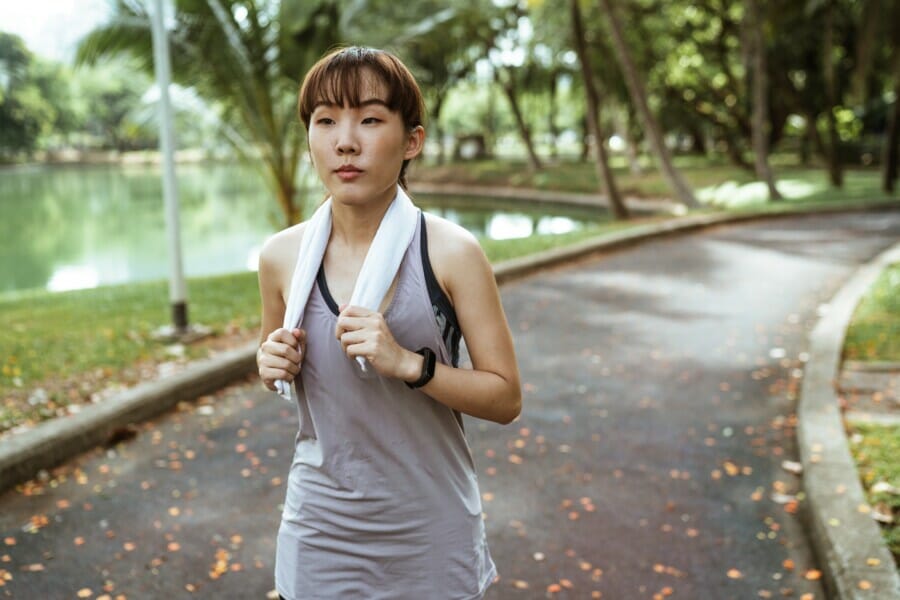You Should Consider Doing These 7 Exercises To Recognize Longevity According To The Trainers
There are nine different factors that the longest-living people in the world have in common, and “natural movement” is number one. We know that exercise is vital to longevity, because it “not only improves our quality of life, but it also boosts our immune system; improves our health, reducing the risk of developing many major diseases; strengthens our bones; and improves the quality of our sleep,” says Joanna Dase, a fitness expert with Curves. And as we get older, there are seven functional fitness moves for longevity that keep our bodies moving as comfortably and efficiently as possible.
First up, it’s important to understand what the term “functional fitness” actually means. “Functional fitness is working out in such a way that prepares you for real-life movements and scenarios,” Dan Castillo, instructor at GRIT Bxng, previously told Well+Good. “These movements are easily transferred over to real-life scenarios such as getting out of bed, which is rising in a squat, walking up a flight of stairs, which involves lunges, falling and pushing yourself back up, or a push-up motion, and climbing over a fence, or a pull-up.”
Adding this type of movement to your workouts prepares your body for daily tasks, and makes it easier to complete those daily tasks throughout your life. “There are many functional movement patterns which can assist longevity and with regular practice can drastically improve the quality of our life and keep us mobile and independent,” says Dase. “Additionally, by training the muscles to work together rather than independently, functional movements can help prevent falls and injuries.”
Believe it or not, most of what we put our bodies through on a regular basis, whether schlepping home groceries or opening heavy doors, come down to only a few core movements. And by working the functional fitness exercises at the base of these movements into your routine, your body will be better prepared to move with ease as you age. Keep reading to find out what they are.
1. Squat

Image by Andrea Piacquadio via Pexels
Of all the functional fitness moves that help with longevity, the classic squat tops the list. It’s the largest movement in the body, and forces you to engage everything from your core through your glutes all the way down to your toes. “The squat enables us to move from a seated position to standing position with ease, without the need to use your arms or the assistance of someone else,” says Dase. Once you feel comfortable with the standard squat, you can amp things up with one of the more challenging variations (which come with the added bonus of sculpting your booty).
2. Rotation
“Rotation is involved when we get out of bed, get up off the floor and even turn to check over out shoulder when driving,” says Dase. “Practicing our range of rotation will help us maintain our independence [as we get older].” The dumbbell wood chop, demonstrated in the video above, is a great way to build strength in your obliques, which are responsible for all of the rotation-based moves your perform in your daily life like opening the fridge or moving side to side.
3. Hinge
Hinging at your hips is critical for doing things like tying your shoes, picking things up from the ground, and reaching down to open low cabinets. “Maintaining the ability to Hip Hinge allows us to maintain personal self care,” says Dase. To do hinging movements, like kettlebell swings and deadlifts properly, think about sending your hips back and using your core and the muscles in your lower body to propel them forward. Doing hinging movements with weights works your whole posterior chain—aka the muscles down the back of your body, like your hamstrings, glutes, and back muscles—and can help to combat some of the effects of sedentary behavior.
4. Push
Pushing—a la opening a door or pushing your chair back from your desk at the end of the day—is another important motion you’ll need to be able to do throughout your life. Pushing motions require the use of your chest, shoulders, triceps, quadriceps, and core, which are just about all of the spots you hit when you drop down into a standard push-up.
5. Pull
Think of pulling motions as the opposite of pushing ones. Pulling workouts—particularly pulldowns—are important for keeping your back strong. They work the latissimus dorsi muscles (aka the big muscles right under your shoulders that control your scapula), and help give you better posture and alignment, prevent injury, and combat the effects of computer work. Using resistance bands in your upper body workouts (a la the video above) is a great way to work those pulling muscles in your regular routine.
6. Lunge
All the muscles and joints work at the same time at different motions during lunge and target glutes and quads. Dase says “The lunge is vital for climbing stairs and going uphill”
7. Gait

Image by Andrea Piacquadio via Pexels
Walking is one of the best types of movement you can do for your overall health—after all, there’s are a reason why it’s the most popular exercise among the world’s longest living people. “A quality gait helps us to walk in alignment, which allows us to walk comfortably and with correct posture,” says Dase. Working on your gait (whether by way of logging multi-mile runs or simply stepping outside for regular mental health walks) will ensure you’re able to clock those 10,000 daily steps for years to come.
Featured Image by Ketut Subiyanto via Pexels














